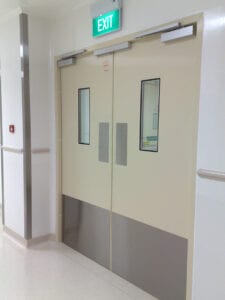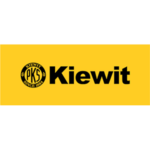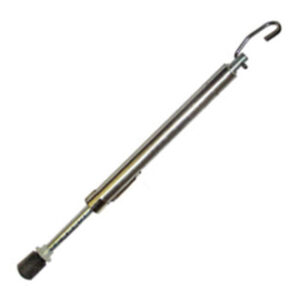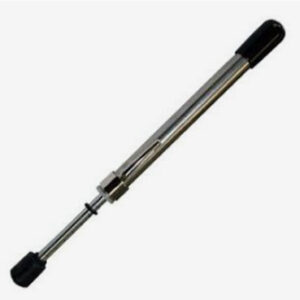Buy NFPA 80 – Best Fire Door Inspection

How do you perform Fire Door Inspection?
Performing a fire door inspection and testing is an essential step in ensuring that fire doors will function as intended in the event of a fire. Here are some key steps for performing a fire door inspection and testing:
- Inspect the door assembly: Check the door itself for any signs of wear and damage, such as cracks, warping, or delamination. Look for any damage or wear on the frame, hinges, and hardware, such as loose or missing screws, bent hinges, or damaged weatherstripping.
- Test the door’s operation: Open and close it several times to ensure it moves smoothly and latches properly. Check the door’s self-closing mechanism to ensure that it is functioning correctly.
- Check the door’s labeling: Verify that the door is labeled with the manufacturer’s name, the date of manufacture, and the listing agency’s label.
- Check clearances: Verify that the door has the proper clearances around the frame and at the bottom of the door.
- Test the integrity of the door: Perform a smoke test or a hose stream test to ensure that the door will maintain its integrity in the event of a fire.
NFPA 80 - Fire Door Inspection - What you need to know?
Fire Door Inspections for fire-rated doors is an integral part of your building’s overall fire protection system. An operating fire door, just like a properly operating fire damper, is a key component to the compartmentalization of a building to stop the spread of deadly fire, smoke, and toxic fumes. If the fire door assembly isn’t working properly, your facility is at risk.
How long have annual Fire Door Inspection requirements been required?
Annual fire door inspections were introduced with the adoption of the 2007 Edition of NFPA 80. The newest standard still requires that fire-rated doors be tested for functionality no less than annually and that a written record of the inspection be kept on file for the Authority Having Jurisdiction (AHJ).
Who can perform a fire door inspection?
- A qualified individual must do fire door inspections with the proper training, qualifications, and certifications. This can include:
- Certified fire door inspectors who have completed specialized training and passed an examination to become certified in fire door inspection.
- Fire protection engineers or other professionals with a background in fire protection and experience in fire door inspections.
- Building or facility maintenance staff with proper training in fire door inspection and experience in identifying and repairing defects.
- Certified Automatic Fire Door Inspectors who work for fire door manufacturers, distributors, or installers have been trained and tested on fire door installation and inspection.
- The person performing the inspection knows the relevant codes and standards, particularly the NFPA 80, as well as experience and understanding of fire door construction, operation, and maintenance.
What if my business is tax exempt?
Some of our Previous Clients Include





How are fire door clearances measured?
Check that the frame, door, hinges, hardware, are aligned and in working order. Verify that the face of the door is flush or slightly inset with the face of the frame. Check that the top and bottom flush bolts project one-half inch into the strike. Look for signs of damage.
You will want to use a door gap gauge to check the door margins to make sure they are within the outlined requirements. Note: Measure all clearance dimensions on the pull side of the door when doing a fire door inspection.
Step 1
Figure out what type of door and frame you are inspecting to pinpoint the required NFPA 80 requirements.
Step 2
It's FREE just download it NFPA 80 Fire Door Inspection Checklist
Step 3
Make sure you have the correct fire door gauge to check for the appropriate clearances and proceed with checking your doors.
The People Behind All Things Inspector
FAQ
Frequently Asked Questions
When it comes to Fire Door Inspection, there is no shortage of information. The most frequently asked question about Fire Door Inspection has been answered by our team and we’ve provided you with some other relevant questions that often come up!
Annual fire door inspections were introduced with the adoption of the 2007 Edition of NFPA 80. The newest standard still requires that fire-rated doors be tested for functionality annually and that a written inspection record is kept on file for the Authority Having Jurisdiction (AHJ).
To perform fire door inspections per the requirements of NFPA 80, the individual performing the inspection should have specific qualifications and certifications. Here are a few qualifications and credentials that may be required:
- Training in fire door inspection: The individual should have completed training on fire door inspection, including the proper methods for inspecting and identifying defects.
- Fire door inspector certification: Some organizations offer certification programs for fire door inspectors, such as the International Door Association's (IDA) Certified Automatic Fire Door Inspector program.
- Fire protection engineering or related field: Some organizations may require that the individual performing the inspection has a background in a related field.
- Experience in Fire door inspection: The inspector should have experience in performing fire door inspections so they can identify defects and make appropriate recommendations for repair.
- Knowledge about the NFPA 80 standard: The inspector should be familiar with the requirements of NFPA 80, including the proper installation, maintenance, and inspection of fire doors.
- It is important to note that the qualifications and certifications required for fire door inspections may vary depending on the organization or jurisdiction. Check with the relevant authorities to ensure that the inspector meets the required qualifications.
According to the National Fire Protection Association's (NFPA) 80 standard, fire-rated doors must be inspected annually to ensure they are in working order.
Additionally, fire doors must be tested periodically to ensure that they will maintain their integrity in the event of a fire. The testing frequency will depend on the type of door and its intended use.
These are general guidelines that local codes and regulations may have different requirements.
It's also important to remember that the tests should be performed by a qualified professional who can identify defects and make appropriate recommendations for repair or replacement
According to NFPA 80, records of fire door inspections and testing should be maintained by the facility to document the condition of the fire doors and any repairs or replacements that were made. The standard recommends that the following information be included in the records:
- Date of inspection: The date the fire door was inspected and tested.
- Description of the door: The location, type, and size of the fire door, as well as any identifying marks or labels.
- Results of the inspection: A detailed description of any defects or deficiencies found during the inspection and any repairs or replacements made.
- Name of the inspector: The name of the individual who performed the inspection.
- It is crucial to keep accurate and up-to-date records of fire door inspections, so the facility team can use them to demonstrate compliance with NFPA 80, as well as for safety and insurance purposes.
Let's Recap to see What We Learned about NFPA 80 and Fire Door Inspections
In conclusion, NFPA 80 is the National Fire Protection Association’s standard for fire doors and other opening protectives. It provides guidelines for the proper installation, maintenance, and fire door inspections to ensure they will function as intended in the event of a fire. The standard covers new and existing fire doors, including door assemblies, hardware, and accessories requirements. As per the standard fire, doors must be inspected and tested annually to ensure they are in proper working order to ensure the safety of the building and its occupants. Additionally, it’s essential to maintain accurate inspection records and to check with local authorities for additional requirements.




